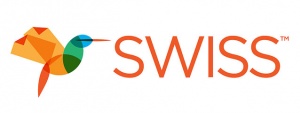
SWISS uses AI to transform static engineering documents into interoperable and machine-readable model-based data that reduces time, cost, and risk in the engineering lifecycle.
Consider your vast internal and external library of specs and standards, work instructions, test plans, MRO materials, and more. They're probably all in static PDF format and you're creating more every single day. These documents are chock full of critical data that your teams use daily in their engineering workflow: parts-materials-process requirements, equations, images, tables, graphs, and of course references to many other documents.
But how do you get necessary data out of those documents and into your enterprise applications? How do you reuse data rather than duplicating the same tasks for every project. How do you find the requirements you need for each and every workflow task? How do you extract key elements from these documents into your handover materials in CFIHOS?
More often than not, the solution is tedious and time-consuming manual labor that is prone to human error and unnecessary risk. Wading through hundreds of pages of documentation, copy+paste, and manual rekeying are some of the most common manual tasks. In 2022, in the era of digital transformation and the digital thread, why are we still using dead-text PDF and still doing so much manual labor in modern engineering workflow?
SWISS is the Semantic Web for Interoperable Specs and Standards. SWISS AI and semantic processing tools analyze new and legacy documents and characterize individual data elements including their definitions, their place in a standard ontology, and their relationships to other pieces of data. For example, one engineer might spend days or weeks identifying and extracting requirements from hundreds of customer specs. SWISS does the same job in seconds with greater accuracy.
SWISS creates interoperability between documents and data, between disconnected repositories, and between enterprise applications. All data elements are stored in the SWISS Knowledge Graph and this data can be queried and delivered to applications and formats (like PLM, MES, ERP, CFIHOS, etc) via the SWISS API. Each piece of data can be reused over and over without copy/paste and rekey, always maintaining fidelity with the source.
SWISS accelerates digital transformation and helps companies reduce manual labor, lower costs, mitigate risk, and gain previously-unavailable insights from their engineering content.
One engineer recently said, “SWISS is to technical documents as CAD is to 2-D drawings.”
Our clients and partners include the US Department of Defense, Defense Logistics Agency, three of the five top aerospace and defense companies, Siemens TeamCenter, PTC Windchill, Elysium, ASME, ASTM, MIL-Specs, and others.
Get in touch with us to talk about the shift from static documents to the next generation of engineering data.
Sign up
Signup to receive the latest news from Future Oil & Gas directly to your inbox
Stay informed about events, speakers and programme and get the news and insights from the cutting edge of digital technologies servicing the oil and gas industry.

